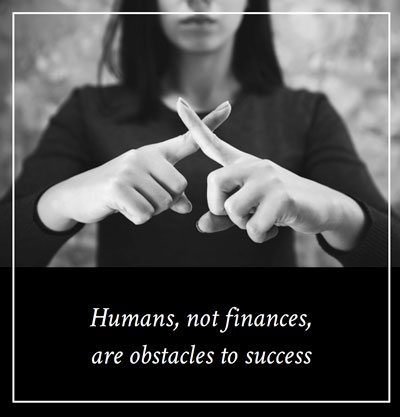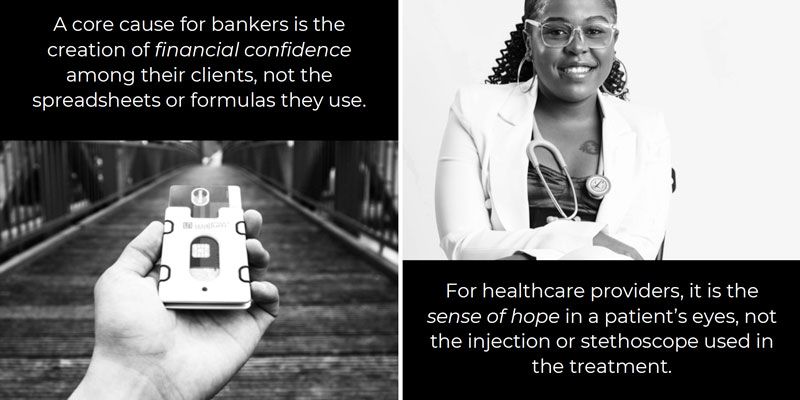
There are various reasons change programs fail. A few years ago, we asked 422 executives from companies of all sizes and industries about their change initiatives. The participants were asked to list the reasons they believed their initiatives failed. Surprisingly, 62% cited poor communication, 54% claimed insufficient leadership sponsorship, and 50% blamed organizational politics or a lack of understanding of the purpose of the change. The common theme here — humans, not finances, are obstacles to success. This is why we take a human-centric approach to develop change resilience.
Whether you’re leading a CX transformation program or change initiative in your organization, a human-centered approach to change resilience starts by identifying a “core cause.”
A core cause is a bridge that stretches a mission and values into the future — the higher purpose that drives your organization and everyone in it. It is usually defined by the people you serve, your customers or colleagues.
A core cause should not be confused with products, services, tools, or processes. These things can change and improve over time. An organization’s core cause should be defined from the customer’s perspective and remain constant. For example, a core cause for bankers is the creation of financial confidence among their clients, not the spreadsheets or formulas they use. For healthcare providers, it is the sense of hope in a patient’s eyes, not the injection or stethoscope used in the treatment.

Below are some questions to help identify your organization’s core cause:
- How do your customers use your product or services?
- What does it empower or inspire them to do?
- How does it make their lives better or easier?
- How do you treat your customers and colleagues?
- How do you solve their problems?
The next step in a human-centered approach to change resilience is to help employees see the connection between the organization’s core cause, the work they do, and their individual purpose. Remember that a core cause isn’t about products and services — it’s about the impact you are making on another person. This is important because when it comes to our ability to absorb and adapt to change, knowing that the change will better allow us to help others is the key driver.
Kickstarter’s business model is an excellent example of how people are willing to engage and change if there are social benefits to doing so. Tanushree Mitra and Eric Gilbert of the Georgia Institute of Technology conducted a study to identify the key phrases and words associated with the most successful Kickstarter campaigns. After reviewing 20,000 phrases in 45,000 campaigns, they found that the most successful phrases emphasized selflessness, impact on others, and connection. Whether knowingly or not, Kickstarter backers responded favorably when pitches emphasized social impact and reciprocity.

Individual connection to a core cause is important because by viewing change through the lens of the core cause, we downgrade the importance of each process or tool. We focus instead on who we are and what we stand for — our purpose. We focus on that which stays constant even when everything else appears to be changing. This is the foundation that change resilience is built on.
Our Cultivating Change Resilience blog series will continue to explore ways CX leaders can overcome challenges, rise to exceptional performance and be future-ready. Here at ImprintCX, we are passionate about teaching and inspiring leaders. Let’s talk about how we can support you.